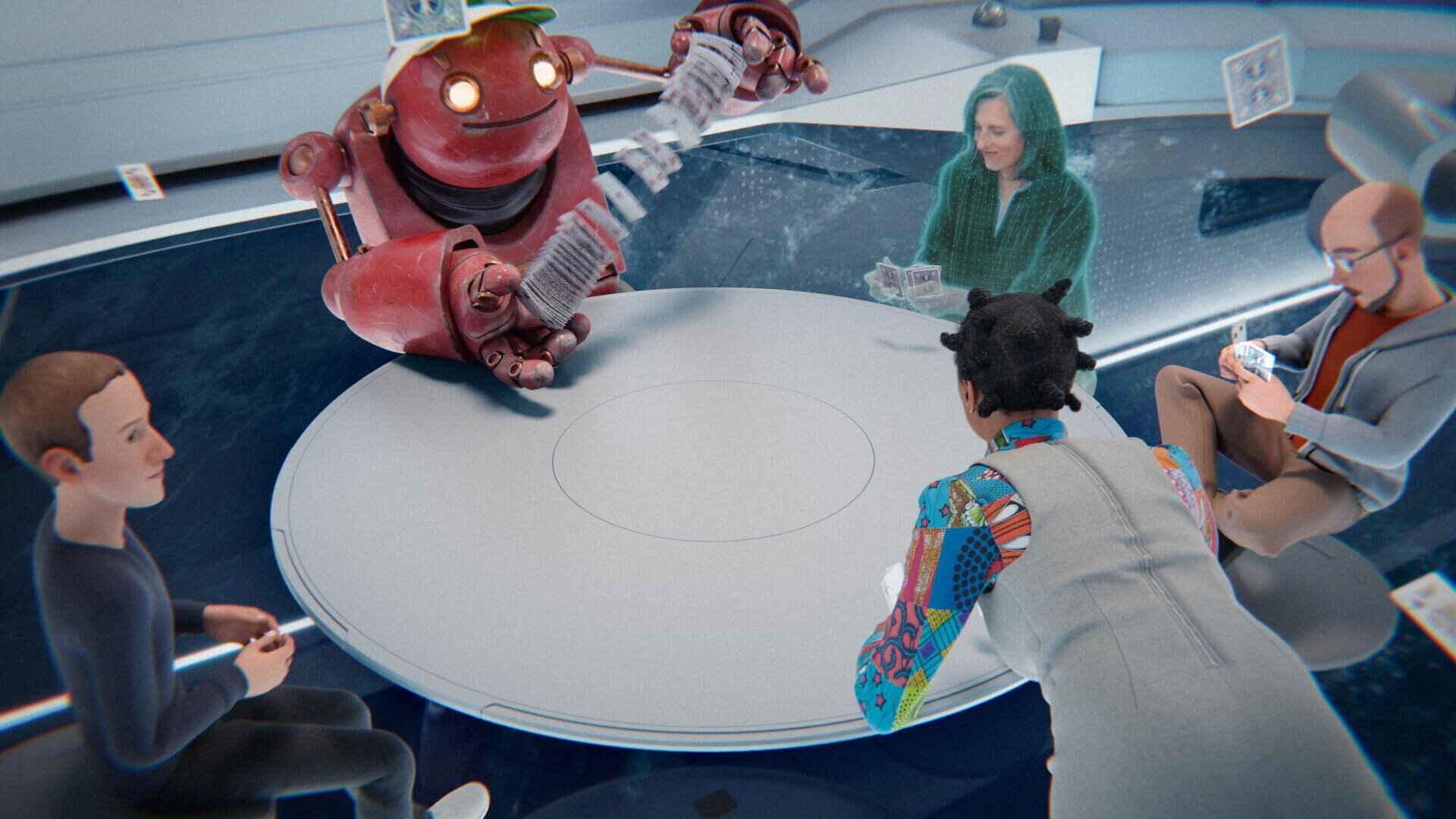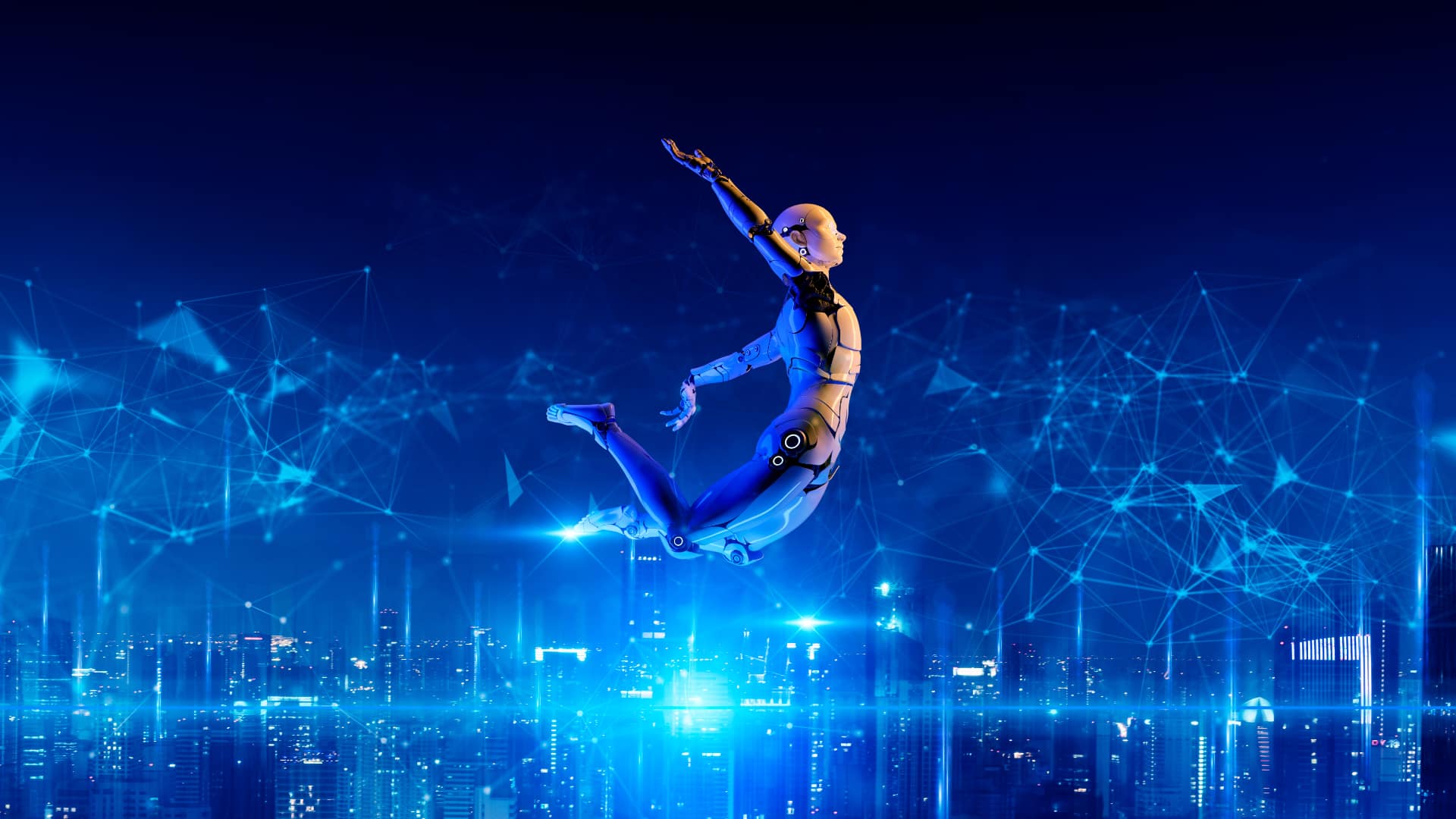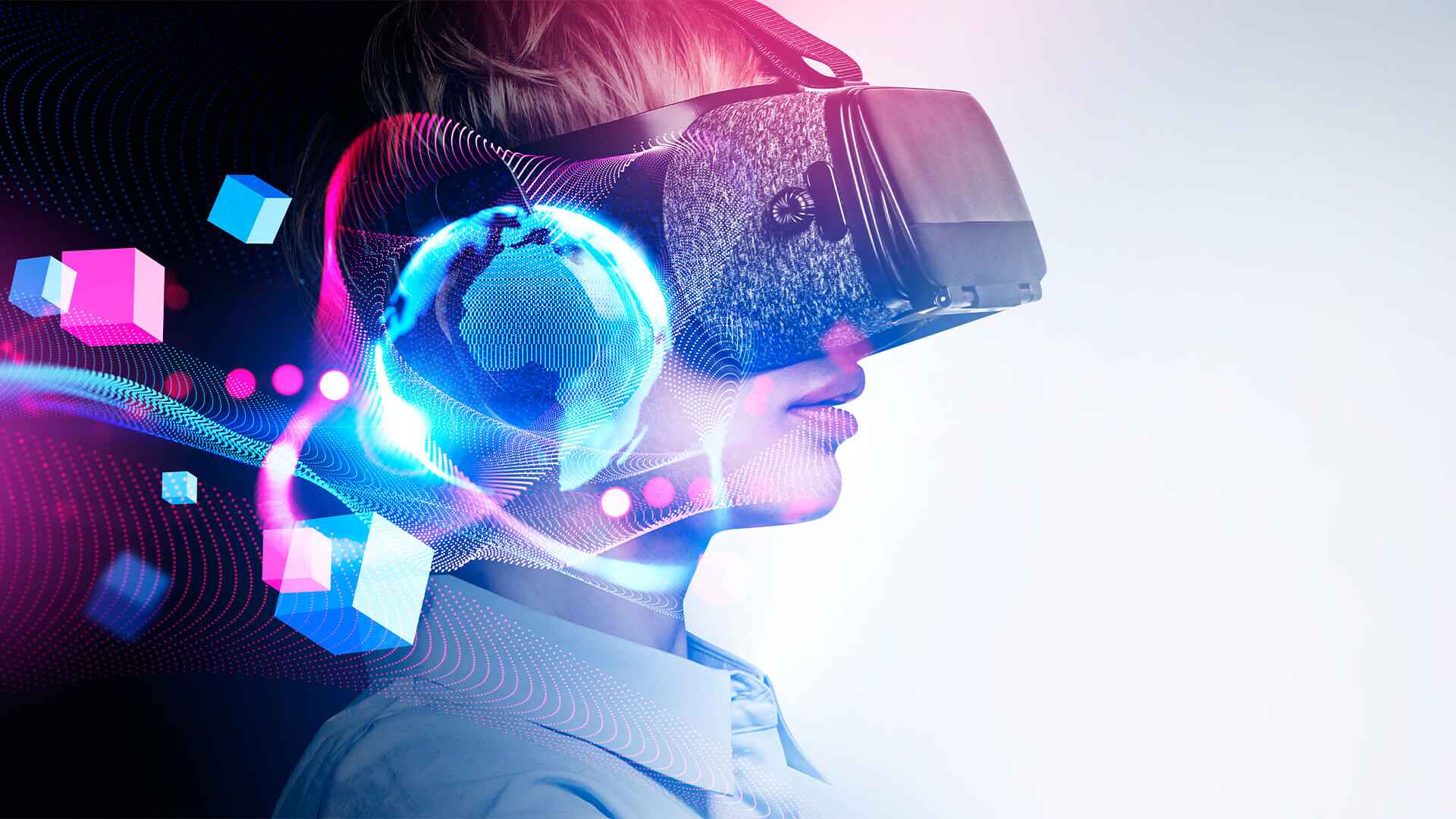Introduction
Welcome to the fascinating world of the Metaverse. A term that has been buzzing around tech circles and capturing the imagination of both technophiles and pop culture enthusiasts alike. But what exactly is the Metaverse? And who owns it?
The concept of the Metaverse originated from science fiction, popularized by Neal Stephenson’s novel “Snow Crash” in 1992. It described a virtual reality space where people can interact with each other and their surroundings in a fully immersive way. In recent years, the idea of the Metaverse has evolved from a fictional concept to a tangible reality, thanks to advancements in technology such as virtual reality, augmented reality, and blockchain.
At its core, the Metaverse is a virtual universe, a collective digital space where users can engage with one another, create content, conduct business, and experience a variety of activities. It transcends the boundaries of physical reality and offers endless possibilities for collaboration, exploration, and entertainment.
The Metaverse has gained significant attention due to its potential to revolutionize various industries. From gaming and entertainment to education and healthcare, the Metaverse holds the promise of transforming the way we interact with digital content and each other.
With big tech companies like Facebook, Google, and Microsoft investing heavily in virtual reality and augmented reality technologies, they are positioning themselves as pioneers of the Metaverse. Their vast resources and technological expertise put them in a favorable position to shape the future of this burgeoning digital landscape.
However, it’s not just the tech giants who are vying for dominance in the Metaverse. Traditional industries such as real estate, fashion, and even art are also making their way into this digital realm. For example, virtual real estate is becoming a lucrative market, with people buying and selling digital land within the Metaverse.
Cryptocurrency and blockchain technology also play a significant role in the Metaverse. These technologies enable secure and transparent transactions, digital ownership, and the creation of decentralized virtual economies. NFTs (Non-Fungible Tokens) have become particularly popular as a way to represent ownership of unique digital assets within the Metaverse.
Gaming and entertainment are integral parts of the Metaverse experience. Virtual reality and augmented reality offer more immersive and interactive gaming experiences, while live concerts, virtual festivals, and even sports events take entertainment to a whole new level within the digital realm.
As the Metaverse continues to evolve, virtual reality and augmented reality technologies will become more accessible, allowing a wider audience to experience its wonders. This increased accessibility, combined with the democratizing power of blockchain, will pave the way for more decentralized and user-driven experiences within the Metaverse.
However, as with any emerging technology, questions of regulation and governance arise. How should the Metaverse be governed? Who should decide the rules and standards? Governments around the world are grappling with these questions to ensure that the Metaverse operates in a fair and safe manner.
So, who owns the Metaverse? The answer is complex and ever-evolving. While big tech companies may have a significant influence, the true ownership of the Metaverse lies with its users and innovative creators who shape and contribute to its development.
In this article, we will delve into the various aspects of the Metaverse and explore the potential, challenges, and future of this digital frontier. Join us on this exciting journey as we unravel the mysteries and possibilities of the Metaverse.
What is the Metaverse?
The Metaverse is a term that has gained prominence in recent years, but it may still seem elusive or even confusing to some. In basic terms, the Metaverse is a virtual universe, a collective digital space where users can interact with each other and their surroundings. It goes beyond traditional online platforms and offers a more immersive and interconnected experience.
Think of the Metaverse as a parallel digital reality that exists alongside our physical world. It’s a space where people can create, learn, work, play, and socialize in ways never before possible. It combines elements of virtual reality, augmented reality, and other emerging technologies to provide a seamless and immersive experience.
Unlike traditional online platforms, which are often disjointed and limited in their interactions, the Metaverse aims to create a cohesive virtual experience that mirrors the richness and complexity of the real world. It allows users to traverse different virtual environments, engage with others in real-time, and engage in a wide range of activities.
The Metaverse is not just about passive consumption of digital content. It’s a dynamic and interactive space where users can actively participate and contribute to the creation of the virtual world. Whether it’s designing virtual objects, building virtual communities, or even coding and scripting interactive experiences, the Metaverse empowers users to be co-creators of the digital realm.
One of the key aspects of the Metaverse is the concept of digital ownership. In traditional online platforms, users may have limited control over their digital assets and creations. In the Metaverse, however, ownership and control are fundamental. Through the use of blockchain technology and NFTs, users can establish verifiable and immutable ownership of their virtual assets, including virtual real estate, artwork, collectibles, and more.
The possibilities within the Metaverse are vast and diverse. From attending virtual conferences and concerts to shopping in virtual stores and experiencing virtual tourism, the Metaverse offers a new level of engagement and immersion. It also holds promise for education, training simulations, remote work collaboration, and healthcare applications.
As the boundaries between the physical and digital worlds blur, the Metaverse presents exciting opportunities for individuals, businesses, and society as a whole. It has the potential to revolutionize industries, reshape social interactions, and redefine the way we experience and interact with digital content.
In the following sections, we will explore different aspects of the Metaverse, including the role of big tech companies, the emergence of virtual economies, the impact of virtual reality and augmented reality, and the challenges and opportunities that lie ahead. Join us as we delve further into this intriguing digital frontier.
The Potential of the Metaverse
The Metaverse holds immense potential to transform various industries and reshape the way we interact with digital content and each other. Let’s explore some of the key areas where the Metaverse is making an impact:
1. Enhanced Collaboration: The Metaverse brings people together from all around the globe, transcending physical boundaries. It offers a platform for enhanced collaboration and communication, enabling teams to work together seamlessly regardless of their geographical locations. This has the potential to revolutionize remote work, making it more engaging, interactive, and productive.
2. Interactive Education: Traditional education is evolving in the Metaverse. Immersive learning experiences, virtual classrooms, and interactive simulations provide students with new ways to engage with educational content. Whether it’s exploring historical sites, conducting virtual experiments, or participating in virtual seminars, the Metaverse has the potential to revolutionize education and make learning more engaging and accessible to all.
3. Virtual Commerce: The Metaverse is becoming a thriving marketplace where users can buy and sell virtual goods and services. Virtual stores, digital marketplaces, and virtual currency enable a new ecosystem of digital commerce. From buying virtual real estate and virtual fashion to creating and selling digital artwork, the Metaverse offers a new frontier for entrepreneurs and creators to monetize their skills and creativity.
4. Entertainment Evolution: Gaming and entertainment take on a whole new dimension in the Metaverse. Virtual reality and augmented reality technologies enable more immersive and interactive gaming experiences. Live concerts, virtual festivals, and interactive storytelling are just the tip of the iceberg in terms of what the Metaverse can offer. It has the potential to transform the entertainment industry, blending the boundaries between the real and virtual world.
5. Social Interaction: The Metaverse allows for new forms of social interaction and connection. Virtual communities, social platforms, and shared virtual spaces enable people to come together, express themselves, and engage in social activities in unique ways. In the Metaverse, users can attend virtual meetups, virtual parties, and even form deep connections with others in a digital environment.
6. Healthcare Advancements: The potential of the Metaverse extends to healthcare as well. Virtual reality simulations and augmented reality overlays can enhance medical training, enabling healthcare professionals to practice complex procedures in a safe and immersive environment. Telemedicine can be taken to new heights by creating virtual clinics and offering remote consultations within the Metaverse, providing healthcare access to those in remote areas or with limited mobility.
These are just a few examples of the wide-ranging potential that the Metaverse holds. The opportunities for innovation and creativity within the Metaverse are virtually limitless. However, along with its potential, the Metaverse also brings challenges, such as privacy concerns, security risks, and the need for coherent governance frameworks.
In the following sections, we will explore the role of big tech companies in shaping the Metaverse, the emergence of virtual economies and cryptocurrency, the impact of virtual reality and augmented reality technologies, and the challenges and opportunities that lie ahead as the Metaverse continues to evolve.
Big Tech’s Role in the Metaverse
In the emergence of the Metaverse, big tech companies such as Facebook, Google, and Microsoft are playing a significant role. These tech giants have been investing heavily in virtual reality, augmented reality, and related technologies, positioning themselves as key players in shaping the future of the Metaverse.
With their vast resources, technical expertise, and large user bases, big tech companies have the potential to accelerate the development and adoption of the Metaverse. They are actively working on creating immersive virtual reality experiences, building virtual worlds, and exploring ways to connect users in virtual environments.
Facebook (now known as Meta) has been particularly vocal about its ambitions in the Metaverse. Mark Zuckerberg, the CEO of Meta, envisions a future where the Metaverse becomes the next frontier for social interaction, commerce, and entertainment. The company has already launched products like Oculus VR headsets and Horizon Worlds, a social platform aimed at connecting users in virtual spaces.
Google, through projects like Google Earth VR and its investment in Magic Leap, has been experimenting with virtual reality and augmented reality technologies. Google’s focus has been on creating immersive experiences, accessing and sharing information in virtual environments, and exploring the potential of the Metaverse for education and training.
Microsoft has also made significant strides in the Metaverse space. Its HoloLens augmented reality headset and the Mixed Reality ecosystem are paving the way for interactive and immersive experiences. Microsoft has been investing in virtual reality game studios and exploring applications of the Metaverse in sectors such as healthcare and architecture.
These tech giants’ involvement in the Metaverse brings both opportunities and challenges. On the one hand, their resources and expertise can drive advancements in technology and infrastructure, making the Metaverse more accessible to a wider audience. Their platforms can provide a foundation for developers and content creators to build and showcase their virtual experiences.
On the other hand, there are concerns about centralization and monopolistic control. With big tech companies taking the lead in the development of the Metaverse, the risk of a few entities dominating and dictating the rules of this digital realm arises. This can potentially limit innovation and hinder the open and democratic nature that the Metaverse has the potential to embody.
To address these concerns, there is a growing call for a decentralized and open Metaverse. This includes the use of blockchain technology, which enables transparent transactions, digital ownership, and the creation of decentralized virtual economies. NFTs (Non-Fungible Tokens) have gained popularity as a way to represent ownership of unique digital assets within the Metaverse, allowing creators to directly monetize their work without relying solely on big tech platforms.
In the next sections, we will explore the entry of traditional industries into the Metaverse, the impact of cryptocurrency and blockchain, the role of virtual reality and augmented reality technologies, and the challenges and opportunities presented by decentralization in the Metaverse.
Traditional Industries Entering the Metaverse
As the Metaverse gains traction, traditional industries are recognizing its potential and making their way into this digital realm. Industries such as real estate, fashion, and art are among those embracing the Metaverse to explore new avenues of growth and engagement.
Real Estate: The concept of virtual real estate has garnered significant attention in the Metaverse. Users can buy, sell, and develop virtual land within the digital realm, creating a new market for virtual properties. Virtual real estate offers exciting opportunities for developers, investors, and individuals to participate in a thriving virtual economy, as well as allowing for the creation of virtual communities and experiences.
Fashion: The fashion industry has also recognized the potential of the Metaverse. Virtual fashion allows users to dress their avatars in stylish and unique digital garments. From virtual fashion shows to virtual luxury stores, the Metaverse provides a platform for designers and brands to showcase their creativity and engage with a global audience. Virtual fashion has the potential to redefine the way we express ourselves and engage with clothing.
Art and Creative Industries: The Metaverse has opened up new opportunities for artists and creative professionals to showcase their work. Through NFTs, artists can create and sell digital artwork with verifiable ownership, providing a new avenue for monetization and exposure. Virtual galleries and exhibitions enable artists to reach a wider audience, fostering a new era of digital art and immersive experiences.
Beyond these industries, the Metaverse offers opportunities for a wide range of sectors to explore new business models and engage with customers in innovative ways. Retailers can create virtual stores where users can browse and purchase products, creating a more interactive and immersive shopping experience. Companies in the entertainment and media industries can leverage the capabilities of the Metaverse to offer unique and engaging content, such as virtual concerts, interactive experiences, and immersive storytelling.
The entry of traditional industries into the Metaverse brings both opportunities and challenges. On the one hand, it opens up new revenue streams and expands the reach of these industries. It allows for greater creativity, innovation, and personalized experiences for consumers. On the other hand, it raises questions about digital ownership, intellectual property rights, and the integration of virtual and physical experiences.
For traditional industries to successfully navigate the Metaverse, they need to understand the unique dynamics of this digital realm. Embracing the principles of digital ownership, user engagement, and collaboration will be key in creating compelling and meaningful experiences for users within the Metaverse.
In the next sections, we will explore the role of cryptocurrency and blockchain in the Metaverse, the impact of virtual reality and augmented reality technologies, and the challenges and opportunities presented by decentralization and government regulation in this evolving landscape.
Cryptocurrency and Blockchain in the Metaverse
Cryptocurrency and blockchain technology are playing a significant role in shaping the Metaverse. They provide the infrastructure and tools for secure transactions, digital ownership, and decentralized virtual economies. Let’s explore their impact on the Metaverse:
1. Digital Ownership: Blockchain technology enables the creation of verifiable digital ownership within the Metaverse. Through the use of Non-Fungible Tokens (NFTs), users can establish and prove their ownership of unique virtual assets such as virtual real estate, digital artwork, and collectibles. This introduces a new paradigm of scarcity and value within the digital realm, empowering creators and users to monetize their creations and establish digital rights.
2. Decentralized Virtual Economies: Cryptocurrencies, such as Bitcoin and Ethereum, have the potential to facilitate decentralized virtual economies within the Metaverse. With virtual currencies, users can transact and exchange value within the digital realm, enabling virtual jobs, trade of virtual goods and services, and creating digital marketplaces. These virtual economies provide opportunities for empowerment and financial inclusion, bypassing traditional intermediaries and fostering peer-to-peer interactions.
3. Transparency and Security: The decentralized nature of blockchain technology provides transparency and security in the Metaverse. Transactions and ownership records are recorded on a public ledger, ensuring transparency and immutability. This eliminates the need for trust in centralized authorities and reduces the risk of fraud and manipulation. Smart contracts, powered by blockchain, enable the automatic execution of predefined terms and conditions, enhancing security and efficiency.
4. Creator Economy: Blockchain technology and NFTs have revolutionized the creator economy within the Metaverse. Artists, musicians, and content creators can tokenize their work and sell directly to consumers, bypassing traditional gatekeepers. This allows for more equitable distribution of revenue and empowers creators to retain greater control over their intellectual property. It also creates new opportunities for fan engagement, as users can own and trade digital collectibles tied to their favorite artists or franchises.
5. Interoperability and Standardization: Blockchain technology has the potential to facilitate interoperability and standardization within the Metaverse. Different virtual worlds and platforms can connect and communicate through blockchain protocols, enabling seamless transfer of virtual assets across multiple virtual environments. This breaks down the barriers between fragmented digital realms, creating a more cohesive and connected Metaverse.
As with any emerging technology, there are challenges to overcome. Scalability, energy consumption, and user experience are key considerations for the widespread adoption of blockchain and cryptocurrency in the Metaverse. Moreover, ensuring the protection of user data, privacy, and preventing illegal activities within decentralized virtual economies are important areas of focus.
Despite these challenges, the integration of cryptocurrency and blockchain technology in the Metaverse brings new opportunities for users, creators, and businesses. By leveraging the capabilities of these technologies, the Metaverse can become a more inclusive, transparent, and user-driven digital landscape.
In the next sections, we will explore the impact of gaming and entertainment in the Metaverse, the role of virtual reality and augmented reality technologies, and the challenges and opportunities presented by decentralization and government regulation in this evolving landscape.
Gaming and Entertainment in the Metaverse
Gaming and entertainment play a central role in the Metaverse, offering immersive experiences, interactive storytelling, and new forms of social interaction. Let’s explore the impact of gaming and entertainment within the Metaverse:
1. Immersive Gaming Experiences: The Metaverse takes gaming to a whole new level by providing immersive, interactive, and shared experiences. Virtual reality (VR) and augmented reality (AR) technologies allow players to step into virtual worlds, engaging with rich environments and realistic interactions. Gamers can collaborate, compete, and explore vast digital landscapes, providing a sense of presence and immersion that goes beyond traditional gaming.
2. Social Connection and Collaboration: The Metaverse fosters social connection and collaboration among gamers. Virtual communities and shared spaces enable players to interact, communicate, and form relationships with others from around the world. Multiplayer experiences, team-based challenges, and virtual events create opportunities for cooperative gameplay and shared adventures, enhancing the social aspect of gaming.
3. Virtual Economy and Digital Goods: Gaming in the Metaverse goes beyond in-game achievements. Virtual economies thrive within these digital worlds, enabling players to buy, sell, and trade virtual goods, assets, and currencies. Through blockchain technology and Non-Fungible Tokens (NFTs), players can establish ownership of unique in-game items, such as rare weapons, skins, or virtual real estate, adding value and collectibility to their gaming experiences.
4. Interactive Entertainment Experiences: The Metaverse extends entertainment beyond traditional mediums. Virtual concerts, live performances, and interactive storytelling allow audiences to immerse themselves in unique experiences. Artists and creators can leverage virtual reality, augmented reality, and mixed reality technologies to create interactive and memorable entertainment experiences, reaching a global audience in ways not possible in the physical world.
5. Community-Driven Content Creation: The Metaverse empowers gamers and creators to be active participants in content creation. User-generated content and modding communities thrive within virtual worlds, allowing players to customize their experiences and contribute to the evolving virtual landscape. From creating custom avatars and designing virtual environments to coding and scripting interactive gameplay, the Metaverse encourages a culture of creativity and collaboration.
Gaming and entertainment companies are capitalizing on the potential of the Metaverse, driving innovation and setting new standards. They are creating virtual worlds, expansive narratives, and dynamic gameplay experiences that blur the lines between reality and the digital realm. With the integration of blockchain technology, in-game economies are becoming more decentralized and transparent, fostering a more equitable and inclusive gaming ecosystem.
However, challenges remain. Ensuring user safety, moderating user-generated content, and addressing issues of privacy and security are essential considerations within the Metaverse. Furthermore, bridging the gap between different virtual platforms and ensuring interoperability can enhance the overall experience and allow players to seamlessly explore various virtual worlds.
In the following sections, we will explore the role of virtual reality and augmented reality technologies in the Metaverse, the challenges of decentralization, and the need for government regulation to ensure the ethical and sustainable development of this rapidly evolving digital landscape.
The Role of Virtual Reality and Augmented Reality in the Metaverse
Virtual reality (VR) and augmented reality (AR) technologies play a crucial role in shaping the Metaverse, providing immersive and interactive experiences that bridge the gap between the physical and digital world. Let’s explore the impact of VR and AR in the Metaverse:
1. Immersive Virtual Experiences: Virtual reality technology enables users to fully immerse themselves in digital environments. By donning VR headsets, users can step into virtual worlds and interact with objects and characters as if they were physically present. The sense of presence and immersion created by VR technology enhances the realism and engagement within the Metaverse, making it more captivating and interactive for users.
2. Augmented Realities: Augmented reality technology adds digital elements to the real world, blending virtual content with the physical environment. AR overlays digital information onto the user’s real-world field of view, enhancing their perception and interaction with their surroundings. In the context of the Metaverse, AR can enable users to see and interact with virtual objects and avatars in real-world spaces, creating a more seamless integration of the physical and digital realms.
3. Enhanced Communication and Collaboration: VR and AR technologies facilitate improved communication and collaboration within the Metaverse. Users can engage with others in virtual environments, using gestures, voice chat, and avatars to interact and convey emotions. This creates a more immersive and social experience, enabling teamwork, shared experiences, and meaningful connections between users, regardless of their physical location.
4. Interactive Storytelling and Narrative: VR and AR offer new possibilities for interactive storytelling and narrative experiences within the Metaverse. Users can become active participants in virtual narratives, making choices and influencing the outcome of their stories. This interactive storytelling creates a sense of agency and personalization, making the Metaverse more dynamic and engaging.
5. Training and Simulation: VR and AR technologies are invaluable tools for training and simulation within the Metaverse. From medical training simulations to industrial simulations, users can practice real-world scenarios in a safe and controlled virtual environment. This enhances learning outcomes, reduces risks, and expands the potential for realistic training experiences across various industries.
Virtual reality and augmented reality have revolutionized the way we experience digital content and interact with the digital world. As technology advances and becomes more accessible, VR and AR will continue to play a pivotal role in shaping the Metaverse, making it more immersive, interactive, and connected.
However, challenges remain. The high cost of VR equipment, motion sickness in VR experiences, and the need for seamless AR integration are areas that require further development and improvement. Additionally, ensuring user safety, mitigating privacy concerns, and addressing ethical considerations surrounding the use of VR and AR within the Metaverse are important factors for its responsible and sustainable growth.
In the following sections, we will explore the challenges and opportunities presented by decentralization and government regulation within the Metaverse, as well as speculate on the future of ownership in this ever-evolving digital landscape.
Decentralization and the Metaverse
Decentralization is a key principle in the development of the Metaverse, aiming to create a more equitable, open, and user-driven digital landscape. Let’s explore the impact of decentralization within the Metaverse:
1. Democratization of Access: Decentralization allows for a more inclusive and accessible Metaverse. By removing centralized intermediaries, barriers to entry are lowered, enabling a wider range of participants to engage in and contribute to the digital landscape. This fosters diversity, encourages innovation, and empowers individuals who may have been excluded from traditional platforms.
2. User Empowerment: Decentralization shifts the balance of power from centralized entities to individual users within the Metaverse. With the use of blockchain technology, users can establish verifiable and immutable ownership of their digital assets, ensuring greater control and autonomy. This enables users to retain the value of their creations, monetize their skills, and participate in decentralized virtual economies.
3. Transparency and Trust: In a decentralized Metaverse, transactions and interactions are recorded on public ledgers, fostering transparency and trust. Smart contracts, powered by blockchain technology, enable automated and secure execution of predefined conditions. This reduces the need for intermediaries and minimizes the risk of fraud, enhancing the overall integrity of the digital ecosystem.
4. Interoperability and Collaboration: Decentralization supports interoperability among different platforms and virtual worlds within the Metaverse. By using open standards and protocols, users can seamlessly transfer virtual assets and experiences across different digital environments. This opens up possibilities for collaborative and interconnected experiences, enabling users to explore diverse virtual realms without limitations or silos.
5. Community Governance: Decentralization allows for community-based governance and decision-making within the Metaverse. Through decentralized autonomous organizations (DAOs), users can participate in collective decision-making processes, shaping the rules and standards of the digital ecosystem. This promotes a more democratic and user-centric approach to governance, ensuring that the Metaverse evolves in accordance with the desires and needs of its participants.
Despite the potential benefits of decentralization, there are challenges to overcome. Scalability, energy consumption, and user experience are factors that need to be addressed for widespread adoption. Additionally, striking a balance between decentralization and the need for governance, security, and user protection is a continued area of exploration in the evolving landscape of the Metaverse.
Furthermore, collaboration and interoperability are essential for the success of a decentralized Metaverse. Standardization efforts and the development of open protocols are crucial to ensure seamless communication and transfer of assets between different virtual environments.
In the following sections, we will explore the role of government regulation in the Metaverse, the challenges and opportunities presented by such regulations, and examine the future of ownership in this dynamic digital landscape.
Government Regulation and the Metaverse
The rise of the Metaverse has sparked discussions around the need for government regulation to ensure ethical, legal, and secure practices within this rapidly evolving digital landscape. Let’s explore the role of government regulation in the Metaverse:
1. Protecting User Rights and Privacy: Government regulation can play a crucial role in safeguarding user rights and privacy within the Metaverse. It can establish clear guidelines on data protection, consent, and security measures to ensure that users’ personal information and digital assets are protected. Regulations can also address concerns about virtual harassment, cyberbullying, and other potential risks associated with virtual interactions.
2. Ensuring Fairness and Consumer Protection: Regulations can promote fair and equitable practices within the Metaverse to protect consumers. This includes guidelines on pricing, monetization strategies, and the prevention of fraudulent activities. Regulations can also address issues of digital asset theft, plagiarism, and counterfeit goods within virtual economies, ensuring a safe and trustworthy environment for users to engage in commercial transactions.
3. Intellectual Property and Copyright: Government regulations can provide clarity on intellectual property rights and copyright within the Metaverse. It can establish frameworks for protecting creators’ rights, ensuring that their digital artworks, virtual designs, and other virtual assets are protected from unauthorized copying or distribution. Clear regulations can foster a culture of respect for intellectual property and incentivize creators to continue innovating within the Metaverse.
4. Addressing Monopoly and Antitrust Issues: Government regulation can help prevent the concentration of power and monopolistic practices within the Metaverse. As big tech companies invest heavily in this space, regulations can ensure fair competition, prevent anti-competitive behavior, and foster a diverse and innovative ecosystem. This promotes a level playing field for startups, small businesses, and independent creators to thrive within the Metaverse.
5. Ethical Use of Technology: Regulation can address ethical considerations surrounding emerging technologies used within the Metaverse, such as virtual reality and augmented reality. Guidelines can be established to prevent misuse, protect vulnerable populations, and ensure the responsible development and deployment of technologies within the virtual landscape. This includes addressing issues related to consent, identity, inclusivity, and the potential impact on physical and mental well-being.
Government regulation in the Metaverse should strike a balance between enabling innovation and protecting the interests of users. It requires collaboration between lawmakers, industry stakeholders, technologists, and users to develop informed and effective regulations that address the unique challenges and opportunities presented by this new digital frontier.
In the next sections, we will explore the future of ownership in the Metaverse, the opportunities and challenges presented by decentralization, and the implications of government regulation on the development and evolution of the Metaverse.
The Future of Ownership in the Metaverse
The concept of ownership is undergoing a significant transformation within the Metaverse. As virtual worlds and digital assets become more prevalent, the future of ownership in this digital landscape is evolving in exciting and innovative ways. Let’s explore what the future of ownership may look like in the Metaverse:
1. Verifiable Digital Ownership: The use of blockchain technology and Non-Fungible Tokens (NFTs) is revolutionizing digital ownership within the Metaverse. Users can establish verifiable ownership of virtual assets such as virtual real estate, digital artwork, and collectibles. This brings authenticity, scarcity, and value to these digital assets, allowing individuals to truly own and trade unique digital items in a secure and transparent manner.
2. User-Centric Digital Marketplaces: The Metaverse empowers users by enabling peer-to-peer exchanges of virtual goods and services. Decentralized virtual marketplaces allow users to directly buy, sell, and trade digital assets, removing intermediaries and fostering a user-centric economy. This gives creators and users greater control over their virtual assets and provides opportunities for monetization within the Metaverse.
3. Customizable Virtual Identities: In the Metaverse, ownership extends beyond tangible assets to include virtual identities. Users have the ability to customize and define their avatars, representing themselves within the digital realm. This gives individuals agency over their virtual persona and enables self-expression, creating unique digital identities that users can truly own and personalize.
4. Collaborative Creations and Intellectual Property: The Metaverse encourages collaborative creativity and user-generated content. Users can collaboratively create virtual experiences, virtual worlds, and digital art. Ownership of these collaborative creations can be collectively shared or attributed to specific contributors using blockchain-based smart contracts. This opens up new possibilities for shared ownership and ensures fair attribution within the digital landscape.
5. Integration of Physical and Virtual Ownership: The future of ownership in the Metaverse may also involve the integration of physical and virtual assets. For instance, virtual fashion items could be tied to physical clothing pieces that can be delivered to users’ homes. Virtual real estate may intersect with augmented reality overlays on physical spaces. This integration allows for a seamless blending of the physical and virtual worlds, creating new opportunities for ownership and value exchange.
It is important to note that the future of ownership in the Metaverse will likely involve ongoing discussions, debates, and innovations. The implications of ownership within this rapidly evolving digital landscape touch upon legal and regulatory considerations, intellectual property rights, privacy concerns, and more. Establishing standards, protocols, and frameworks that balance user rights, innovation, and commercial interests will be essential for a sustainable and thriving Metaverse.
In the next sections, we will explore the potential challenges and opportunities presented by the future of ownership in the Metaverse, as well as the broader implications of decentralization and government regulation within this dynamic digital landscape.
Conclusion
The Metaverse represents a thrilling frontier in the digital world, offering boundless possibilities for collaboration, creativity, and interaction. As virtual reality, augmented reality, and blockchain technology continue to advance, the Metaverse is poised to reshape various industries and redefine how we engage with digital content and each other.
In this article, we explored the different facets of the Metaverse. We delved into its definition, the potential it holds for industries such as gaming, entertainment, fashion, and real estate, and the role of big tech companies in shaping its development. We also highlighted the importance of cryptocurrency, blockchain technology, virtual reality, and augmented reality in bringing the Metaverse to life.
Decentralization emerged as a central theme in discussing the future of the Metaverse. It offers opportunities for inclusivity, empowerment, and transparency, as users take control of their digital assets and participate in decentralized economies. Simultaneously, government regulation is necessary to protect user rights, ensure fairness, and address ethical concerns within the digital landscape.
Looking ahead, the future of ownership in the Metaverse will see a shift towards verifiable digital ownership, customizable virtual identities, collaborative creations, and integration with the physical world. These changes will shape the way we perceive and interact with virtual assets, blurring the boundaries between the physical and virtual realms.
However, the road to a fully realized Metaverse is not without its challenges. Scalability, user experience, privacy, and security are areas that require ongoing attention and innovation. Striking a balance between decentralization and governance, addressing ethical considerations, and navigating government regulations will be crucial for the responsible and sustainable development of the Metaverse.
As we stand on the cusp of this digital frontier, it is an exciting time to witness the evolution of the Metaverse. With each advancement, we move closer to a future where digital experiences and interactions seamlessly blend with our physical lives, unlocking new realms of creativity, engagement, and connection.
Join us as we embark on this journey and explore the limitless possibilities that await us in the ever-expanding Metaverse.

























